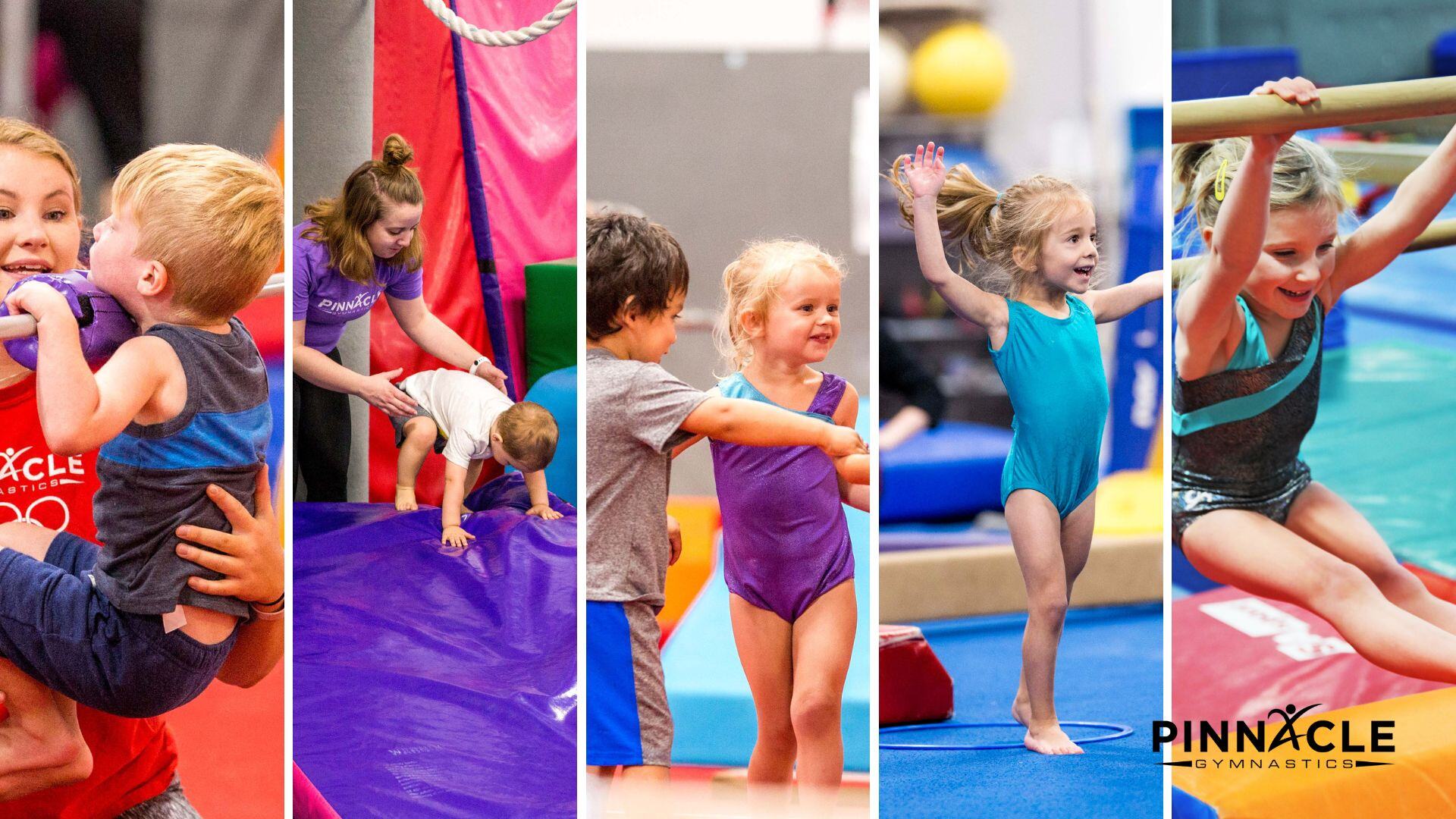5 at Home Cartwheel Tips from a Gymnastics Coach
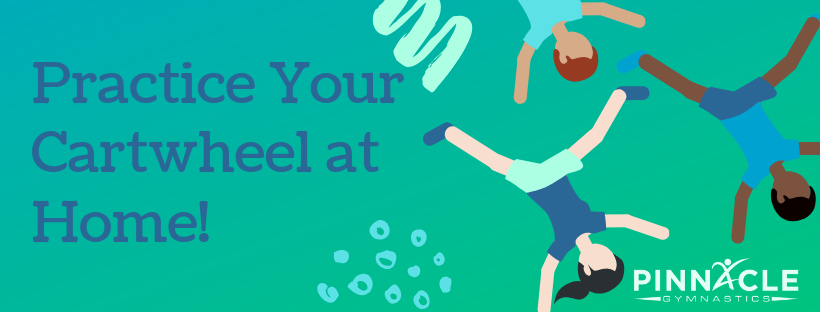
A cartwheel is a basic gymnastics skill and a skill that everyone can learn. Every child loves to be able to show off their cartwheel on the playground. Basic cartwheel drills can be introduced to children as young three. However, true cartwheels typically do not develop until later. Cartwheels require both physical and mental readiness. They are combination of strength, coordination, the proper rhythm, and right pattern. Check out these tips to help your child start working toward cartwheel mastery at home.
Discover the Dominant Foot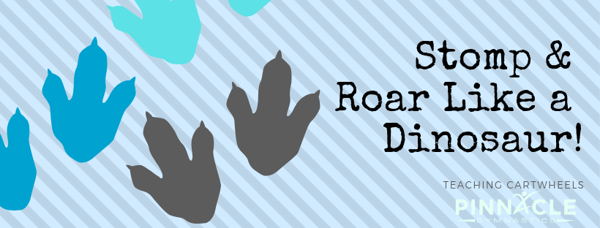
One of the first steps in the cartwheel process is determining your child's dominant foot. One's dominant foot for a cartwheel does not always match their dominant hand. One way to help you discover which foot to have your young gymnast start with is to have them stomp and roar like a dinosaur. Ask your son or daughter start with their feet together tell them on the count of three to stomp one foot forward (and just for fun add a roar). Repeat this three or four times to see if they have a "favorite foot". The foot they stomp forward with most often is likely the foot that should start in front when they cartwheel.
Learn the Side Lever
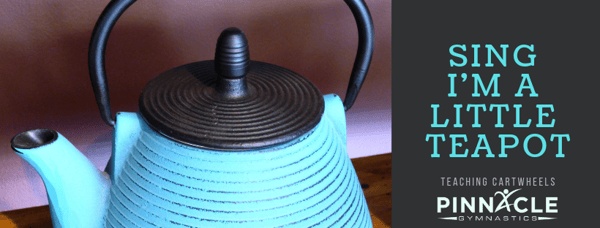
Once you have determined your child's dominant foot then another step to practice is called the side lever, or the transfer of the weight from the feet to the hands. Have your gymnast stand side with their dominant foot slightly in front. Next, have them place the same arm up in the air and the other hand on their hip like the handle of their tea pot. Sing the I'm a little tea pot song and when its time to tip over have your child place the arm that is up on the ground and lift their non dominant foot in the air. This is the beginning of the cartwheel. This levering action helps your child understand which hand to place on the ground first and how to coordinate the arm and leg moving at the same time.
Check out this video of I'm a Little Teapot in Action!
Build Strength
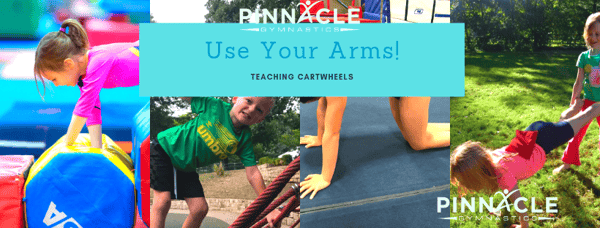
Cartwheels require your child to be able to support their full body weight with just their arms. This is not easy. Help your child develop this strength by encouraging them to bear crawl, wheelbarrow walk, and tackle obstacles on the playground. In addition, you will want to have your child practice the cartwheel hop. Have them place their hands on the ground and hop their feet from one side of their hands to the other side. To make it more challenging try placing their hands on bench or elevated surface and have them jump their feet from one side to the other. You will find that developing upper body strength is not only required for great cartwheels, but also for writing skills in school.
Get Inverted
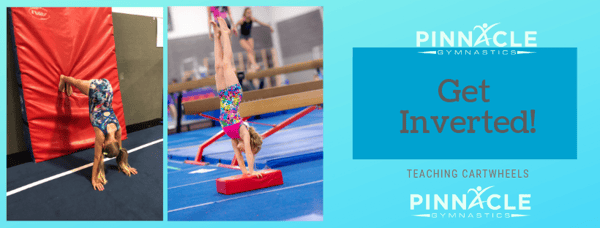
Practice getting inverted. Once your child has the upper body strength to support their weight on their hands then it is time to practice being in handstand. The handstand is one part of the cartwheel as you pass through a straddle handstand when cartwheeling. Have your child walk their toes up and down the wall to get inverted. Once they are comfortable walking up and down the wall have them trying kicking to a handstand against the wall. The handstand doesn't have to be perfect to master the cartwheel, but it is an important part of the skill.
Break Down the Positions & Rhythm
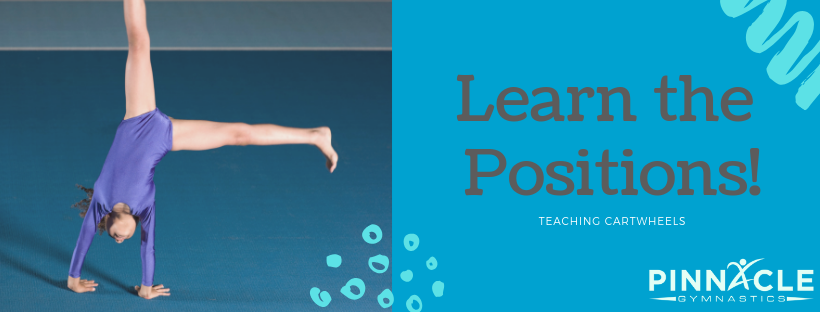 Now, it is time to put the cartwheel together. The cartwheel begins in a lunge position with the dominant foot in front. The next step is to use the side levering action to transfer the weight from the feet to the hands. Once on the hands the gymnast should show a straddle handstand position. Last, the gymnast pushes off of their hand to land on their none dominant foot first. The patter is hand down, hand down, foot down, foot down.
Now, it is time to put the cartwheel together. The cartwheel begins in a lunge position with the dominant foot in front. The next step is to use the side levering action to transfer the weight from the feet to the hands. Once on the hands the gymnast should show a straddle handstand position. Last, the gymnast pushes off of their hand to land on their none dominant foot first. The patter is hand down, hand down, foot down, foot down.
Last, your gymnast will need to practice, practice, practice. Let them practice each step over and over until they are comfortable and confident with the whole process.


